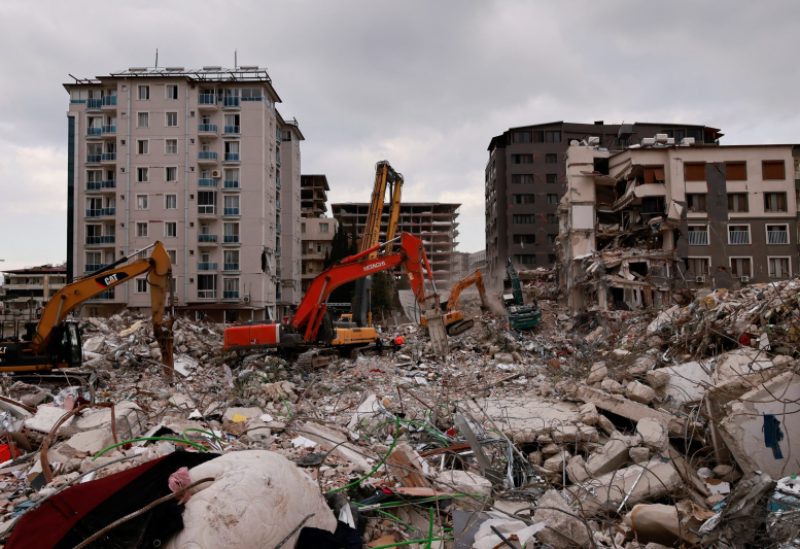
Workers clean the rubble of a collapsed building in the aftermath of a deadly earthquake in Antakya, Hatay province, Turkey, February 21, 2023. REUTERS/Thaier Al-Sudani
World Health Organization chief Tedros Adhanom Ghebreyesus on Wednesday urged the international community to help earthquake-hit northwest Syria, on his first ever visit to opposition-held areas of the war-ravaged country.
“The people of northwest Syria need the assistance of the international community to recover and rebuild,” Tedros told reporters after entering from neighboring Türkiye via the Bab al-Hawa border crossing.
“I call on the international community, governments, philanthropists, individuals, to dig deep,” added Tedros, the highest-ranking United Nations official to visit the opposition-held area since civil war broke out almost 12 years ago.
The WHO chief had already travelled to government-controlled Aleppo and Damascus the same week as the February 6 disaster that killed more than 50,000 people in Türkiye and Syria.
Tedros on Wednesday visited several hospitals and a shelter near the Turkish border for people displaced by the disaster, an AFP correspondent said.
Turkish-backed officials in Syria have put the death toll in opposition-held areas at 4,537, while the Syrian government has said 1,414 people were killed in areas under its control.
The UN has launched a $397 million appeal to help quake victims in Syria, but Tedros warned that “we are not getting as much as what is needed for this emergency”.
‘Needs increasing’
“Even before the earthquake, needs were increasing while international aid was decreasing,” Tedros said.
“We must not close our eyes or turn our backs on the Syrian people.”
In the aftermath of the quake, activists and emergency teams in the opposition-held northwest had decried the UN’s slow response, contrasting it with the planeloads of humanitarian aid that have been delivered to government-controlled airports.
By noon Wednesday, at least 258 aircraft laden with aid had reached regime-controlled areas, transport ministry official Suleiman Khalil said.
UN relief chief Martin Griffiths had admitted on February 12 that the body had “so far failed the people in northwest Syria”.
The United Nations says at least 420 trucks loaded with UN aid have now crossed into the opposition-held pocket since the tragedy.
The quake came nearly 12 years into Syria’s war which devastated swathes of the country, killed nearly half a million people and displaced millions more.
More than four million people live in areas outside government control in Syria’s north and northwest, 90 percent of whom depend on aid to survive.
Crossings
The first UN aid convoy crossed into the area on February 9 — three days after the 7.8-magnitude quake struck — and carried tents and other relief for 5,000. That convoy had been expected before the earthquake.
The UN largely delivers relief to Syria’s northwest via neighboring Türkiye through the Bab al-Hawa crossing — the only way for aid to enter without Damascus’s permission.
The crossing is located in the Idlib region, which UN officials rarely visit and is controlled by the extremist group Hayat Tahrir al-Sham.
The WHO chief said on February 12 that Syrian President Bashar al-Assad had expressed openness to more border crossings for aid to be brought to quake victims in the opposition-held northwest.
On February 13, the United Nations said Damascus had allowed it to also use two other crossings in areas outside regime control — Bab al-Salama and Al-Rai — for three months.
An AFP correspondent said a new aid convoy entered via Bab al-Salama on Wednesday.
The first UN delegation to visit opposition-held northwestern Syria after the earthquake crossed from Türkiye on February 14.
It comprised deputy regional humanitarian coordinator David Carden and Sanjana Quazi, who heads the UN Office for the Coordination of Humanitarian Affairs in Türkiye, and was largely an assessment mission.